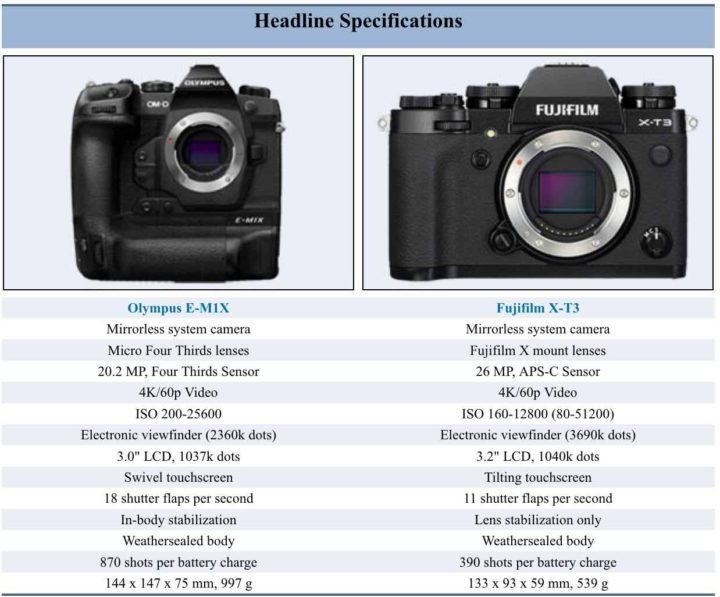Fujifilm X-T3 vs Olympus E-M1X vs Fujifilm GFX 50R Specs and Size Comparison

In a few hours, Olympus will officially announce the Olympus E-M1X.
The full specs are already leaked at 43rumors, and always 43rumors spotted here that Apotelyt has already put Olympus upcoming flagship in their database.
Hence, you can now compare its size to other cameras, for example the Fujifilm X-T3 or the Fujifilm GFX50R.
You can see the size comparisons after Apotelyt’s list of reason why to get the Fujifilm X-T3 over the Olympus E-M1X and vice versa.
Reasons to prefer the Fujifilm X-T3:
- More detail: Has more megapixels (26 vs 20.2MP), which boosts linear resolution by 16%.
- Better image quality: Features bigger pixels on a larger sensor for higher quality imaging.
- Richer colors: Larger pixels generate images with better, more accurate colors.
- More dynamic range: Capable of capturing a wider spectrum of light and dark details.
- Better low-light sensitivity: Can be used in poorly lit environments and still produce good images.
- More detailed viewfinder: Has higher resolution electronic viewfinder (3690k vs 2360k dots).
- Larger screen: Has a bigger rear LCD (3.2″ vs 3.0″) for image review and settings control.
- More compact: Is smaller (133x93mm vs 144x147mm) and will fit more readily into a bag.
- Less heavy: Has a lower weight (by 458g or 46 percent) and is thus easier to take along.
- Faster data transfer: Supports a more advanced USB protocol (3.1 vs 3.0).
- More affordable: Was introduced into a lower priced category (50 percent cheaper at launch).
- More heavily discounted: Has been on the market for longer (launched in September 2018).
Advantages of the Olympus OM-D E-M1X:
- High quality composites: Can combine several shots after pixel-shifting its sensor.
- More flexible LCD: Has swivel screen for odd-angle shots in portrait or landscape orientation.
- More selfie-friendly: Has an articulated screen that can be turned to be front-facing.
- Faster burst: Shoots at higher frequency (18 vs 11 flaps/sec) to capture the decisive moment.
- More portrait friendly: Features an integrated vertical grip for easier portrait shooting.
- Longer lasting: Can take more shots (870 versus 390) on a single battery charge.
- Sharper images: Has hand-shake reducing image stabilization built-in.
- More modern: Is somewhat more recent (announced 4 months after the X-T3).
Fujifilm X-T3 vs Olympus E-M1X
Fujifilm GFX 50R vs Olympus E-M1X






